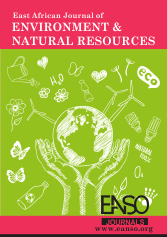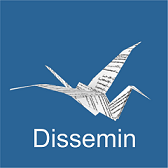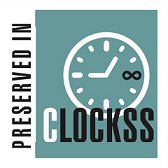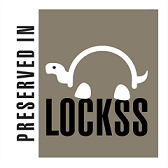Medical Conditions Associated with Mining and Fishing Activities in Migori County: A Comparative Study
Résumé
The purpose of this research study was to do a comparative study on medical conditions that are associated with fishing and mining occupations in Migori County, Kenya. The study was shaped by three main objectives; to determine medical conditions associated with miners in Migori County, to identify medical conditions experienced by fishermen in Migori County and to establish the differences in medical conditions among miners and fishermen in Migori County. The study employed both quantitative and qualitative designs. It was carried out in the Nyatike Sub-County of Migori County. The target population of the study included miners from 25 sampled mining sites and fishermen from Mugabo BMU (Beach Management Unit) in the Nyatike sub-county. A sample of 400 participants participated in this study where Mugabo BMU was allocated 200 participants and other selected 25 mining sites allocated 8 each. The study used random sampling to generate its sample size. The data collection exercise used a visualisation semi-structured interview where a checklist was used together with probing, observation, and a questionnaire. The data was later ranked and scored through simple ranking, pairwise ranking, proportional pilling and matrix scoring. The data was presented by mapping, paragraphing and use of tables and other quantitative methods. The study established that infectious diseases are still the main cause of ill health among people practising mining and fishing occupations, besides rampant injuries. Clinical syndromes like stomach aches, coughs, and allied diseases, physical injuries were very common in the two occupations. The study, therefore, recommends the provision and use of Personal Protective Equipment (PPE) to reduce the number of injuries as well as support various amenity services, security, and proper regulations
##plugins.generic.usageStats.downloads##
Références
BBC (2002). Fishing is ‘the most dangerous job. http://news.bbc.co.uk/2/hi/health/2195847.stm
Caddy-Retalic, S., Andersen, A. N., Aspinwall, M. J., Breed, M. F., Byrne, M., Christmas, M. J., Dong, N., Evans, B. S., Fordham, D. A., Guerin, G. R., Hoffmann, A. A., Hughes, A. C., Van Leeuwen, S., McInerney, F. A., Prober, S. M., Rossetto, M., Rymer, P. D., Steane, D. A., Wardle, G. M., & Lowe, A. J. (2017). Bioclimatic transect networks: Powerful observatories of ecological change. Ecology and Evolution, 7(13), 4607–4619. https://doi.org/10.1002/ece3.2995
Centre for Disease Control. (2010) Best Practices for Controlling Respirable Dust in Coal Mines. The National Institute for Occupational Safety and Health. Grand Junction CO; 2010.
Dhatrak SV, Nandi SS, Chatterjee DM, Dhumne UL. (2004) Health Status Evaluation of Limestone Mine Workers. Natl J Community Med: 5(4); 410-3.
Grayson, R.L., and Watzman, B. (2001) History and Overview of Mine Health and Safety. Mine Health and Safety Management-Society for Mining, Metallurgy, and Exploration, Inc., Littleton, CO.1-13.
Eisler, R. (2003). Health Risks of Gold Miners: A Synoptic Review. SpringerLink. https://link.springer.com/article/10.1023/A:1024573701073?error=cookies_not_supported&code=a3427039-56be-4b70-8d5a-9016101a4621
FAO. (2021) The International Year of Artisanal Fisheries and Aquaculture 2022. https://www.fao.org/fileadmin/user_upload/faoweb/FI_Meetings/CACFish/7e.pdf
Howard L. Hartman., and Jan M. Mutmansky. (2002) Introductory Mining Engineering: Mining’s Contribution to Civilisation, Second Edition, pp. 1.
Kaustell, K. O., Mattila, T. E. A., Hurme, T., Salmi, P. S., & Rautiainen, R. H. (2017). Predictors for occupational injuries and diseases among commercial fishers in Finland 1996-2015. International maritime health, 68(4), 196–202. https://doi.org/10.5603/IMH.2017.0037
Kyeremateng-Amoah, E., & Clarke, E. E. (2015). Injuries among Artisanal and Small-Scale Gold Miners in Ghana. International journal of environmental research and public health, 12(9), 10886–10896. https://doi.org/10.3390/ijerph120910886
Long, R. N., Sun, K., & Neitzel, R. L. (2015). Injury Risk Factors in a Small-Scale Gold Mining Community in Ghana’s Upper East Region. International journal of environmental research and public health, 12(8), 8744–8761. https://doi.org/10.3390/ijerph120808744
Matheson, C., Morrison, S., Murphy, E., Lawrie, T., Ritchie, L., & Bond, C. (2001). The health of fishermen in the catching sector of the fishing industry: a gap analysis. Occupational medicine (Oxford, England), 51(5), 305–311. https://doi.org/10.1093/occmed/51.5.305
Percin, F., Akyol, O., Davas, A., & Saygi, H. (2012). Occupational health of Turkish Aegean small-scale fishermen. Occupational medicine (Oxford, England), 62(2), 148–151. https://doi.org/10.1093/occmed/kqr181
Republic of Kenya (2019). Distribution of Population by Administrative Unit. 2019. Kenya Population and Housing Census, II. https://s3-eu-west1.amazonaws.com/s3.sourceafrica.net/documents/119746/2019-Kenya-Population-and-Housing-Census-Volume.pdf
Smith, B. (2019). A Guide to the Four Main Methods of Mining. AZo Materials. https://www.azom.com/article.aspx?ArticleID=18547
The National Academies Press. (2017) Investigative Strategies for Lead-Source Attribution at Superfund Sites Associated with Mining Activities; A consensus study report.
Yang, H. (2019). Role of Traditional Ecological Knowledge and Seasonal Calendars in the Context of Climate Change: A Case Study from China. MDPI. https://www.mdpi.com/2071-1050/11/12/3243
World Bank. (2001) World development indicators 2001 (English).1:22099
Copyright (c) 2023 Enock Otieno Odhiambo, Elizabeth Mitaki, PhD, John Gachohi, PhD

Ce travail est disponible sous la licence Creative Commons Attribution 4.0 International .




























